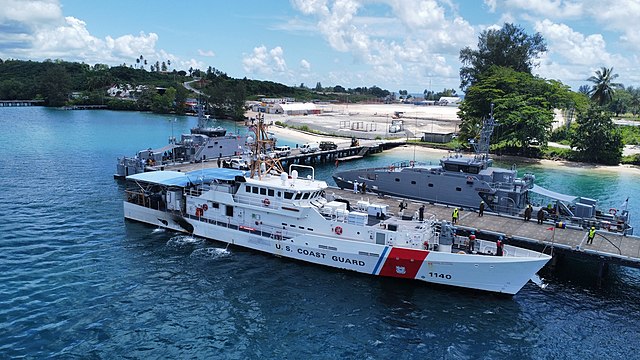The British Pacific Fleet (BPF) was a Royal Navy formation that saw action against Japan during the Second World War. It was formed from aircraft carriers, other surface warships, submarines and supply vessels of the RN and British Commonwealth navies in November 1944.
Five of the six fleet aircraft carriers of the British Pacific Fleet c. 1945
Melbourne, 13 December 1944. First conference of the staff of Admiral Sir Bruce Fraser's new British Pacific Fleet, held in Melbourne. Left to right: Lieutenant Commander G. P. Vollmer (Secretary to Chief of Staff); Lieutenant Commander R. N. Heard; Vice-Admiral C. S. Daniel (seated) Vice Admiral (Administration); Commodore W. G. Andrews; Captain E. H. Shattock (concealed); Captain R. C. Duckworth; Lieutenant S. G. Warrender.
Fleet Air Arm Grumman Avengers, Supermarine Seafires and Fairey Fireflies on the deck of Implacable warm up their engines before taking off. Other British warships in the background.
Formidable on fire after a kamikaze hit.
Manus Island is part of Manus Province in northern Papua New Guinea and is the largest of the Admiralty Islands. It is the fifth-largest island in Papua New Guinea, with an area of 2,100 km2 (810 sq mi), measuring around 100 km × 30 km. Manus Island is covered in rugged jungles which can be broadly described as lowland tropical rain forest. The highest point on Manus Island is Mt. Dremsel, 718 metres (2,356 ft) above sea level at the centre of the south coast. Manus Island is volcanic in origin and probably broke through the ocean's surface in the late Miocene, 8 to 10 million years ago. The substrate of the island is either directly volcanic or from uplifted coral limestone.
PNG Defence Force and United States Coast Guard patrol boats at Manus Island in 2022





